In Greece, our sweet tradition is very rich and delicious… Eat Dessert First Greece is launching a new section, dedicated to local sweets and traditional recipes, local producers, small family companies and cooperatives, as well as fresh ideas that view tradition in a new perspective. This is the trend in contemporary gastronomy, revisiting tradition with a modern look. For the marriage between the old and the new to work, there has to be a deep knowledge of the history and customs of the past.

When using the term traditional products, we mean those prepared with local ingredients and techniques that differentiate them from industrialised products. Each place’s recipes are transferred mouth to mouth, one generation to another, and make part of its customs. This means that each region’s gastronomy belongs to its cultural heritage, and thus it is our duty to preserve it.
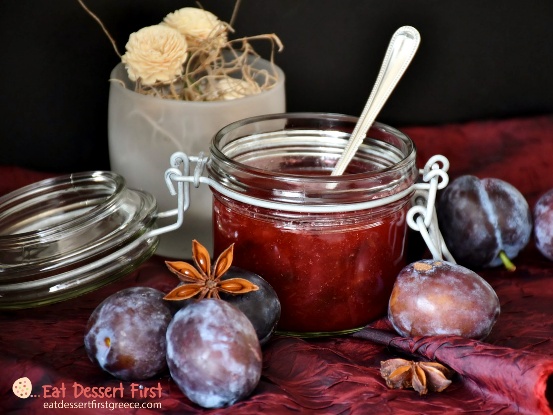
Unfortunately, we found very little written online; books naturally exist, but we know well how important it is for knowledge to be available to everyone for free. Even less we found written in English, while it is very important to promote our culinary wealth worldwide. We will attempt to make a small contribution to that, by collecting short sweet stories about our traditional sweets, because they deserve it!
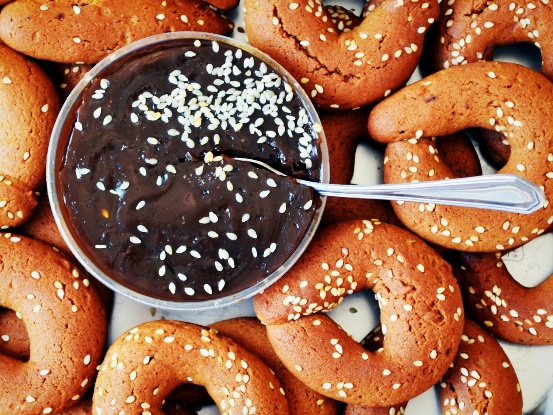
So we embark on a sweet trip -mentally and why not actually- to different places in Greece, looking for authentic local confections, to try, learn about and use in our recipes, each one with its own sweet story that we will slowly unveil… We will get to know products that are found in many regions of our country, in smaller or larger variations, and also special sweets closely connected to the place they were born. In the first article of our new section and because of the current fasting period (40 days before Christmas), we chose the first sweets to be fasting. Built an appetite? Let’s go!
A sweet that fits in a teaspoon
Spoon sweets are traditional Greek confections, fruits in a thick syrup. They are traditionally served on an elaborate small plate, along with a glass of water. One can find them all over Greece, in classic flavors such as cherry, sour cherry, quince, orange, grape, prune, fig et.al. and in original local variations, such as Corfu’s kumquat, citron from Naxos island, firiki (a Greek apple variety) in Pelion and lemon tree flowers from Andros island.

Spoon sweets exist since Antiquity. The Ancient Greeks used honey to preserve fruits left over from the crops. In general, our ancestors preferred confections with honey and fruit as they considered them very healthy. Later on, during the Byzantine period, we read that with the commercial imports of sugar and spices, spoon sweets evolved and spread to the Balcans and Turkey. Some examples of Byzantine spoon sweets are amigdalaton (amigdala means almonds) and karidaton (karidia means walnuts), as Simoni Kafiri mentions in a book of hers.
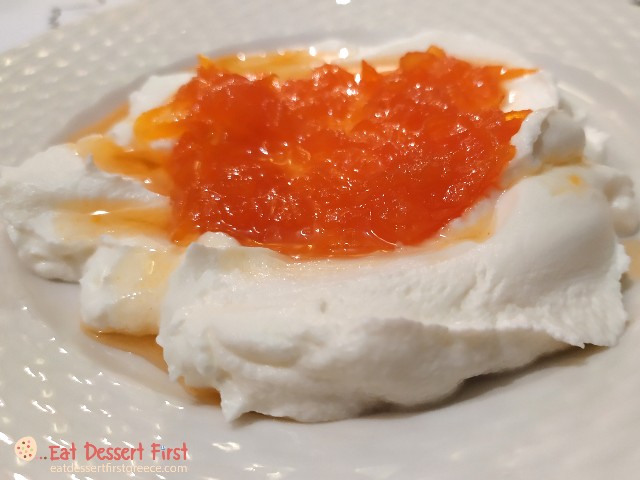
What made us really happy is when we learned that spoon sweets are a quite healthy option, in spite of the generous amount of sugar they contain. The Ancient Greeks were right once again! The first results of a research conducted by the Department of Food Science and Technology of the Perrotis College (American Agricultural School, Thessaloniki) showed that spoon sweets keep a large proportion of the fruit’s antioxidants. This possibly happens because they don’t boil for too much time. What is more, we know that they don’t contain any fat or cholesterol, and also the calories we get from enjoying a spoon sweet are few, as we consume a small amount, just a teaspoon -unless we eat the whole jar of course!
Contemporary Greek gastronomy honours tradition and many restaurants incorporate spoon sweets into their desserts, as a garnish on rice pudding, halva, cheesecake, ice cream, pancakes… as well as more daring creations that approach traditional techniques and local ingredients in a gourmet way.
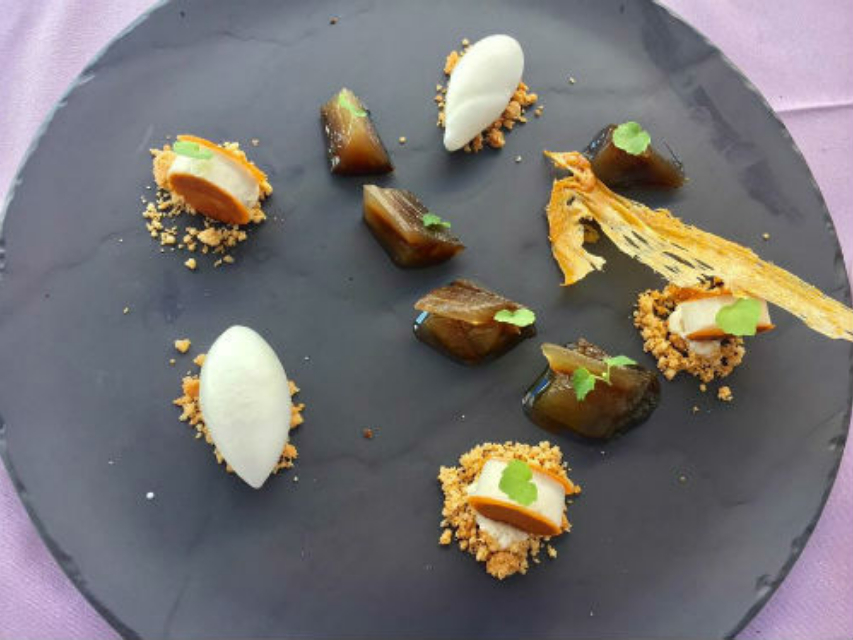
Pasteli, the Greek energy bar
Pasteli is a Greek, delicious and extremely healthy confection, a sesame bar traditionally made with only two ingredients, honey and sesame seeds. It exists since Antiquity too, as we read that it is referred in Homer’s Iliad as well as later by Herodotus and Aristophanes. Then it was called sousamountas (sousami means sesame seeds), as Simoni Kafiri mentions.
Today pasteli can be made also with a mixture of honey and sugar, in a half-half ratio, which gives a harder final product. Many other nuts can be used instead of sesame seeds, such as almonds, peanuts, hazelnuts etc. In modern variations dried fruit can also be added.
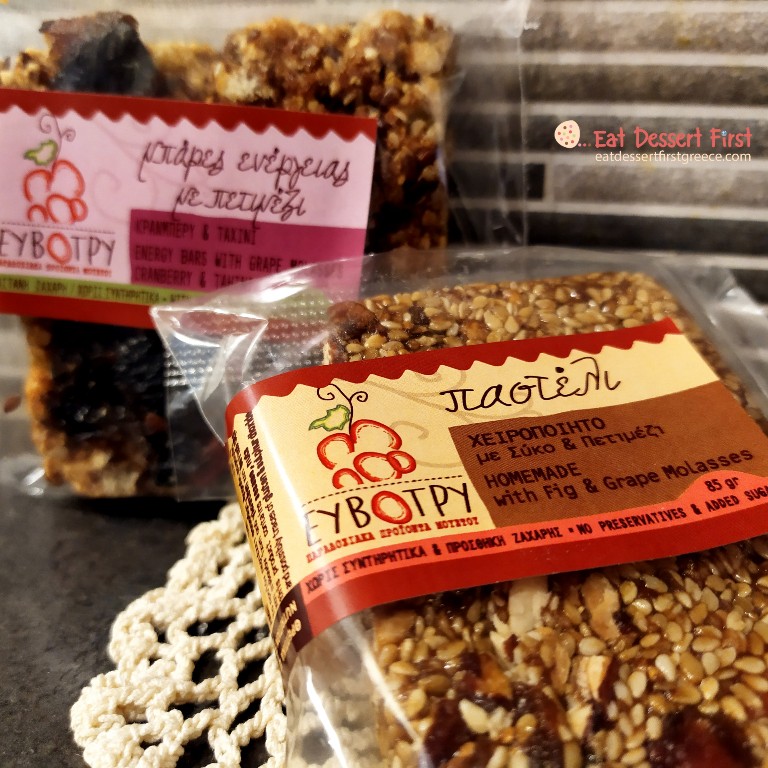
The extremely high nutritional value of pasteli is being recognised today more and more, proving tradition’s wisdom. The nutritional benefits, according to nutritionist (member of the Academy of Nutrition and Dietetics, USA) H. Papaioannou, come from its two basic ingredients. Honey offers carbohydrates to our organism, which translates to energy that lasts. Honey’s carbohydrates combined with proteins from the sesame seeds make pasteli a very filling snack. This why we prefer it in fasting periods, and not only. Sesame seeds also offer lots of fiber. Pasteli also contains B vitamins, calcium, magnesium, phosphorus, iron, zinc, copper and manganese. To get a better idea, a small pasteli has as much calcium as a glass of milk! So much health is such a tiny bar!

Τhe new creative Greek cuisine has saved a place for pasteli too, highlighting it in the most original ways. Pasteli gets transformed into spoon sweet, ice cream, jelly and anything else pastry chefs may come up with!
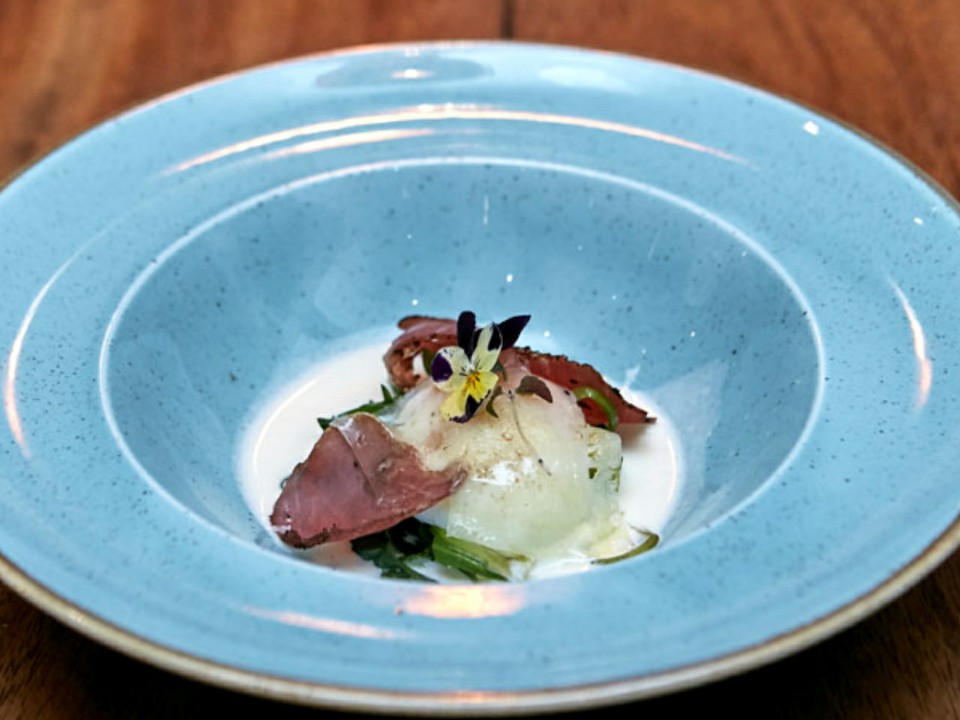
If you visit Kefalonia, don’t forget to buy mandolas!
Mandola sweets are local traditional confections one can find across the Ionian Islands and a trademark of Kefalonia island. They are actually almonds covered with sugar and usually have a characteristic red colour that traditionally came from seaweeds from Livadi Bay in Lixouri, Kefalonia. Their name comes from the italian word mandorla which means almond. The Italians also have confections similar to mandola, called mandorle pralinate or mandorle caramelatte. Maybe their inventor tried them for the first time in a Kefalonian mansion?

We read that mandola was created in Kefalonia during Venetian rule (mid 14th – end 18th century) by the island’s noblewomen who wanted to treat their guest. The island may abound in almonds, but sugar was extremely rare and expensive at the time. Kefalonian housewives solved this problem, by placing almonds with a small amount of sugar to roast in their censers (incense burners), that were always lit in their homes… and thus the first mandola was born!
Later on, the price of sugar dropped, techniques evolved and family pastry shops took the lead. Today, contemporary Greek pastry starts to embrace mandola in very original ways.
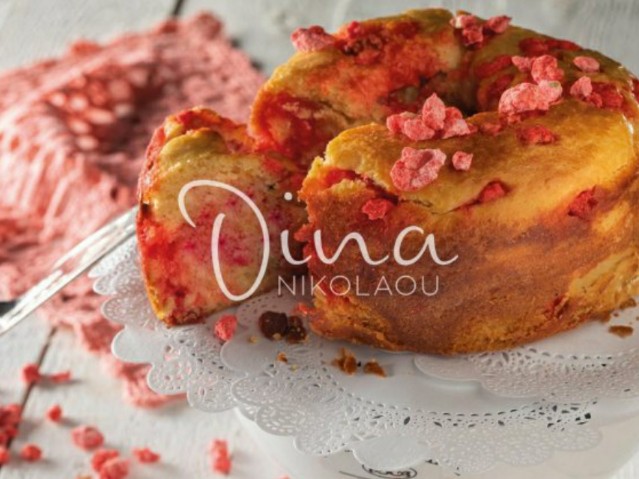
Fruit, nuts, honey, grape molasses, Greek ingredients and traditional recipes, a sweet treasure of our country, waiting for each wannabe “sweet” researcher to discover it! Enjoyed our sweets? We sure did, and for that we warmly thank the first Greek companies -many more coming soon- who send us their products:
Evotry company of Kassotakis family is based in Kavousi, Lasithi, Crete. Evotry means the best bunch of grapes from the vine. The company produces traditional grape must products, grape molasses, jams, pasteli, energy bars, halva, biscuits and much more. The products contain only natural ingredients, such as their own grape molasses made with the Ancient Liatiko grape variety.
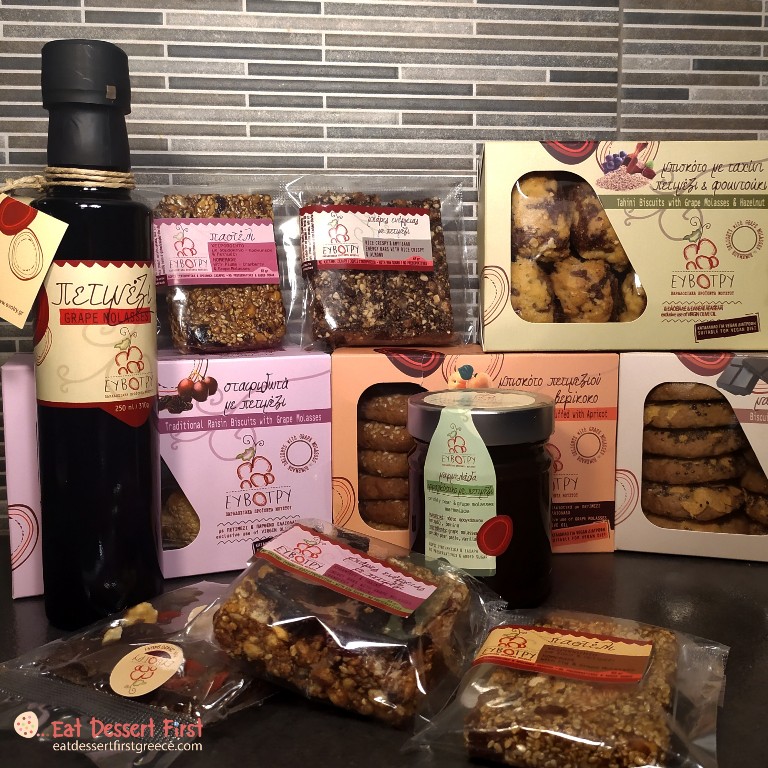
Voskopoula is a traditional pastry shop run by Kappatos family in Argostoli, Kefalonia, since 1910. It produces mandola classic, mandola with honey, almond macaroons, nougat with almonds, comfeto (sweet quince paste), sykomaida (fig pie), pasteli and other, all handmade. Voskopoula has been recently awarded with the “Best Traditional Confectionary Award 2019” among the Ionian Islands by Luxlife Magazine.
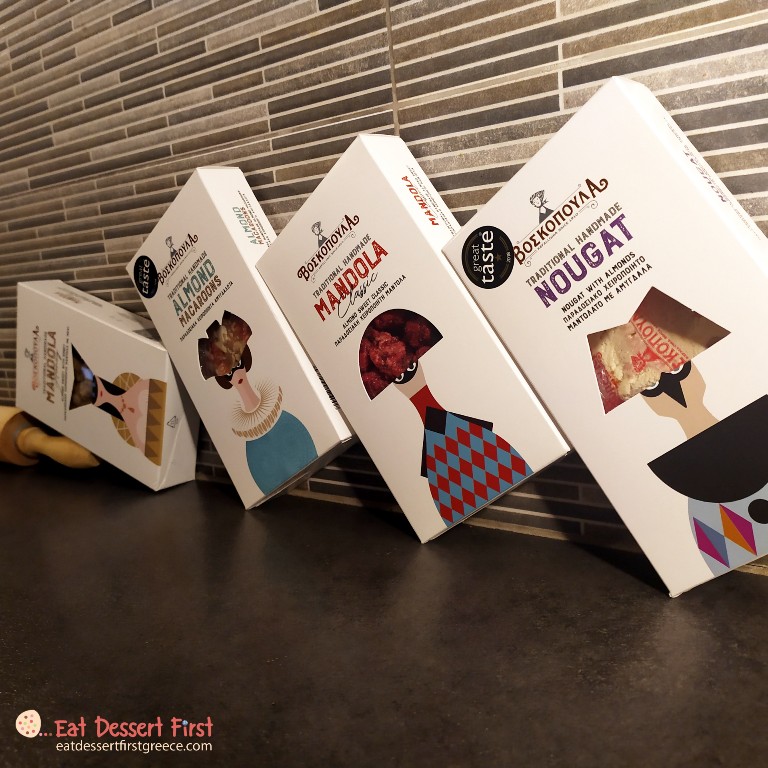
Be the first one to read our new articles!
Follow us by submitting your email into the box you will find if you scroll down our page, so that you receive each new article by email as soon as it is online. Don’t forget to confirm your subscription, in the email you will receive! 🤗 For wordpress bloggers like ourselves, just press the follow button. Follow us on Instagram (@eatdessertfirstgreece) and follow our new Facebook page (eatdessertfirstgreece) to see our posts with our favourite desserts… and much more!


Beautiful delights 😋 I’m very familiar with mandorle caramelatte 😉 Super delicious 😋
Thank you for sharing! I wish I could try them all 😉
LikeLike
Thank you very much for your kind words and for your love to our greek traditional sweets! ❣🙏
LikeLiked by 1 person
That looks beautiful
LikeLike
Thank you very much!! ❣🙏
LikeLike
Your welcome.
LikeLike